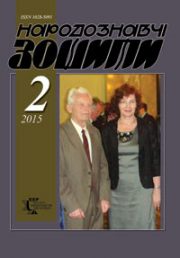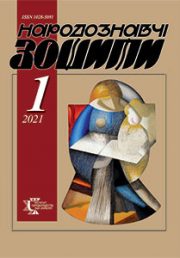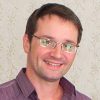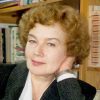The Ethnology Notebooks. 2025. № 4 (184), 930—938
UDK75.044.071.1(477+71)
DOI https://doi.org/10.15407/nz2025.04.930
WAR HEROICITY IN THE WORK OF MYKOLA BIDNYAK. To the 95th Anniversary of His Birth
SHMAGALO Rostyslav
- ORCID ID: https://orcid.org/0000-0002-9853-8989
- Doctor of Art History, Professor,
- Honored Artist of Ukraine,
- Lviv National Academy of Arts,
- Department of History and Theory of Arts,
- 38, Kubiyovycha Str., 79011, Lviv, Ukraine,
- Contacts: e-mail: shmahalo@hotmail.com
Abstract. Mykola Bidnyak is a unique Ukrainian artist, laureate of the Taras Shevchenko State Prize of Ukraine, the first member of the National Union of Artists of Ukraine, professor of the Lviv Academy of Arts. He created about 3500 works not with his hands, but with his mouth during his life in Canada and Ukraine. However, only a part of this rich author’s heritage has been researched and recorded in publications in Ukraine and abroad. But even the most complete source, the book-album «Mykola Bidnyak» (2008), does not fully represent the work of this unique artist, scattered in museums and private collections around the world. The purpose of the article is to highlight the heroism of war in the work of the brilliant artist Mykola Bidnyak.
The line of «historical missionary» of emigrant artists received the greatest development in Canada. After all, such a program of historical portraits, battle scenes and fateful events for Ukrainians — the visualization of the Pantheon of National Memory — was impossible to implement in Ukraine occupied by the Bolshevik regime after World War II. Only a few artists managed to create monumental and large-scale patriotic-historical authorial projects. The symbolic-allegorical technique of Bidnyak’s unrealistically enlarged weapon (sword, spear, bow or saber) is found in almost all works of the battle-historical series, embodied in painting and graphics over the three decades of his work. Today, in the times of another bloody war, the pictorial symbol-call from Mykola Bidnyak is relevant for all generations of Ukrainians who know the price of unshakable will.
The relevance of the study is due to the 95th anniversary of the artist’s birth. In addition, in the current conditions of war and the growing inclusive factor, his life and work are an example of physical invincibility, creative professional growth and patriotism.
The methodological basis of the study is scientific-biographical and structural-typological methods, the method of art historical analysis.
Keywords: Mykola Bidnyak, painting, graphics, artists of the Ukrainian diaspora, historical portraits, war heroism, national memory, inclusive sphere.
Received 20.07.2025
REFERENCES
- The film «Mykola Bidnyak». (2000). Author: R. Shmagalo. TV program «Malovyd». Lviv: LTB. Retrieved from: https://youtube.com/watch?v=Pa77Y2v1v8Q&feature=shared [in Ukrainian].
- Stepovyk, D. (2020). History of the Ukrainian icon. Kyiv: Lybid [in Ukrainian].
- Maychyk, M. (Ed.). (2008). Mykola Bidnyak. Painting and graphics. Album. Kyiv: Mystetstvo [in Ukrainian].
- Labinsky, M.G. (2001). Bidnyak Mykola Petrovich. Shevchenko Laureates 1962—2001: Encyclopedic Directory (Pp. 45—46). Kyiv: Krynytsia [in Ukrainian].
- Ovsiychuk, V.A., & Dzyuba, I.M. (Ed.). (2003). Bidnyak Mykola Petrovich. Encyclopedia of Modern Ukraine (Vol. 2: B. Bio). NAS of Ukraine; NTSh. Kyiv: Institute of Encyclopedic Research of NAS of Ukraine [in Ukrainian].
- Stelmashchuk, G. (2013). Bidnyak Mykola. Ukrainian Artists in the World. Materials for the History of Ukrainian Art of the 20th Century (Pp. 78—81). Lviv National Academy of Arts (Research Sector). Lviv: Apriori [in Ukrainian].







